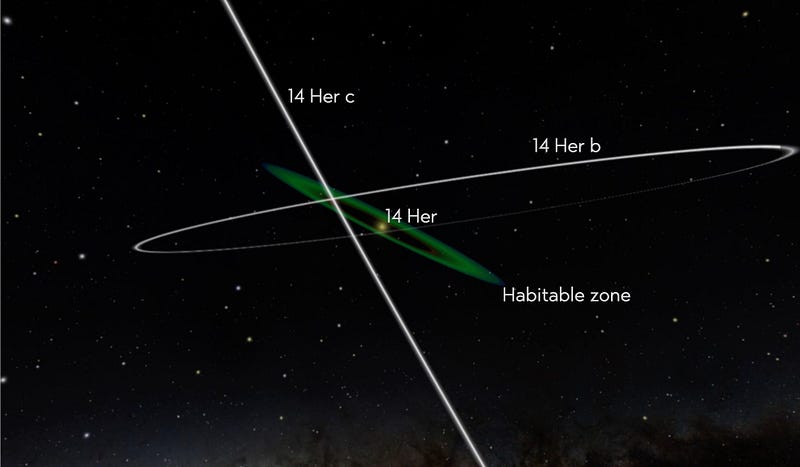Eccentric Orbits in the 14 Herculis System: A Closer Look
Written on
Chapter 1: Introduction to the 14 Herculis System
The 14 Herculis system has captured the attention of astronomers due to its unusual characteristics. Utilizing data from Gaia and two decades of radial velocity measurements, researchers have identified two brown dwarfs in eccentric orbits around the star, located approximately 60 light-years from Earth.
According to the American Museum of Natural History's research team, this system is particularly intriguing because it features a star resembling our Sun and is relatively close by. New insights from the European Space Agency's Gaia telescope, coupled with earlier data from the Hipparcos mission, revealed an unexpected acceleration in the star's movement over a span of 24 years, marked by a significant 31 sigma difference. This suggests the influence of an unseen mass. Dr. Jackie Faherty, a co-author of the study, emphasizes that such acceleration indicates there are scientific discoveries yet to be made.
Section 1.1: Gathering Data
To unravel this mystery, the team meticulously reviewed existing literature, compiling 20 years of radial velocity data. They employed an open-source software called ‘orvara’ to synthesize all available measurements, constructing a comprehensive architectural model of the entire system.
Subsection 1.1.1: Discoveries Made

The researchers discovered two brown dwarfs, one with a mass equivalent to nine Jupiters and the other to seven Jupiters, situated at distances of 2.8 AU and 27 AU from 14 Herculis, respectively. However, it is the unique nature of their orbits that makes this system particularly fascinating.
Section 1.2: Unusual Orbital Patterns
As lead author Daniella Bardalez Gagliuffi points out, the orbits of these two brown dwarfs intersect in an ‘X’ formation around the central star, resembling a complex game of billiards played in the cosmos. Unlike our solar system, where the major planets align in a consistent plane known as the ecliptic, the 14 Herculis system appears to have experienced significant scattering among its planets, leading to their current chaotic orbits. This scattering may have even resulted in the ejection of a smaller brown dwarf from the system, which, if it exists, would be incredibly cold and challenging to detect.
Chapter 2: Future Research Directions
The Brown Dwarfs in New York City Research Group is committed to mapping out planetary systems in our vicinity, seeking to uncover additional mysteries. This ongoing research will further our understanding of celestial mechanics and the formation of planetary systems.
The video titled "The 14 Herculis System: A Planetary Dynamical Crime Scene" dives into the details of this research and presents a visualization created by Deoin Desir using the OpenSpace software, offering a dynamic view of the system's intriguing features.
For more information, you can refer to the following sources:
- BDNYC press release
- “14 Her: A Likely Case of Planet-Planet Scattering,” Daniella C. Bardalez Gagliuffi et al., 2021 December 3, The Astrophysical Journal Letters
- Visualization video
This article is a part of the Daily Space podcast/YouTube series. For more updates, visit DailySpace.org.